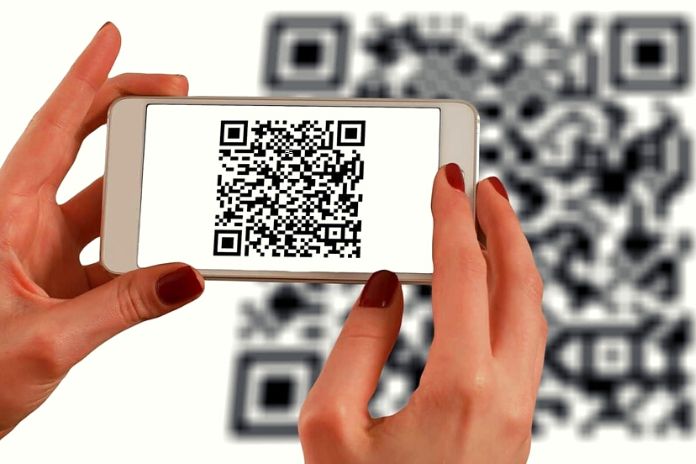We briefly explain what the Qr Code is and how it works, its applications and how it can be helpful in your projects. It is a technology developed in 1994 and spread in recent years thanks to smartphones. The QR code, short for Quick Response Code (fast response code), is a two-dimensional matrix, or 2D code, composed of a series of black modules arranged within a square-shaped pattern, which is utilized to store data expected for perusing electronic gadgets, in particular PDAs and cell phones.
QR Code: From Birth To Its Recent Development
The QR Code appeared in 1994 thanks to a technology developed by the Japanese company Denso Wave, created for tracking the parts of Toyota cars. Its content potential is immediately superior to the barcode, so much so that it is applied for inventory management in various industries. In 1999, the Japanese company released the codes under an open license, favoring a solid diffusion, which accompanied the development of i-mode for mobile phones.
In the second half of the 2000s, QR Codes spread in advertisements printed in newspapers, posters, magazines and flyers to convey web addresses and specific URLs. The diffusion of QR codes has been slow in Europe and the United States. Still, since the end of the 2000s, also favored by the smartphone market development, the technology has acquired more incredible notoriety.
QR Code: How To Create It And How To Read It
After giving you some historical notes on the Quick Response Code, let’s try to understand how it works and how it is created and read.
How To Create A QR Code
The creation of these two-dimensional codes is simple and within everyone’s reach. Track down a reasonable program (on the web, on the PC, or for cell phones) and produce the QR code with the URL of your site, your fan page, your mobile number, your email and considerably more.
Read The QR Code
To peruse a QR Code, it is essential to have a phone or cell phone fit for perceiving the network of which it is made and sending the data back to the client. If your device is not equipped with a system QR Code reader, it is possible to read them thanks to your smartphone’s camera using an application that can be downloaded from the Play Store or the App Store.
QR Code: A Bridge Between Offline And Online
We have seen what the QR code is and how it works and lends itself to the most varied uses and can convey information of all kinds, but what is its innovation? How can they boost a company’s advertising? The new communication process that originates from the two-dimensional matrix of which the QR Code is composed is the creation of hypertext links between the natural world and the online one. This bridge connects the two realities.
Clients regularly travel on the net utilizing hyperlinks (joins) to start with one page, then onto the next and possibly endlessly grow their experience on the web, making a kind of exchange with data. This connection has persistently become more far-reaching in everyday use, to such an extent that it is practically difficult to do it with a different method for correspondence. Furthermore, this is the establishing component that underlies the progress of the QR Code.
The possibility of offering content to a target/consumer and putting it in a position to use it actively, contextualize it, and dialogue with it directly characterizes the digital age consumer. The constraint of their application is just in the brain of the people who plan advertising efforts. We pass from access to helpful information (food product ingredients, correspondence website, maps, signs, etc.) to advertising, promotions, coupons and much else.
Tips For Creating A QR Code
Using a QR Code in your marketing strategy is a wise choice, especially if you want to monitor the performance of offline campaigns or generate engagement from our (existing and potential) customers. Here are some valuable tips drawn from the experience of dozens of campaigns implemented by adopting this technology:
Use A Web Address As A Destination
If you apply the QR Code on your product packaging to view images, videos, or additional information, ensure that whoever scans your code is redirected to a web page that you can monitor with a monitoring system.
Avoid Using “Static” Pages As A Destination
We have often found ourselves if the goal of a QR Code was a domain the customer has allowed to expire or purchase from other competitors. To prevent this tragic business scenario, we advise you always to use a destination you are sure will always be possible to operate.
These days, with current redirection methods, it is pretty often conceivable to change a “static” web address (for instance, .html, .php. Aspx pages), sending the client to different pages or sites possessed by you, obviously, in the ideal system, the client will land straightforwardly on the page advanced for his cell phone gadget without further diverts.
Do Not Redirect To Your Homepage
The person who is scanning your QR Code is making a considerable emotional effort to reach the content you are proposing to him: he has taken his smartphone, activated the camera, and scanned the code on your product or poster… At this point, he will have to find all the information contextual to his current research intention.
Redirecting the user to a general information page that does not answer specific questions is a failing strategy. It will generate fewer actions than we could have by directing our customers to a particular and contextualized page.
Also Read: How Did Artificial Intelligence Come About?



